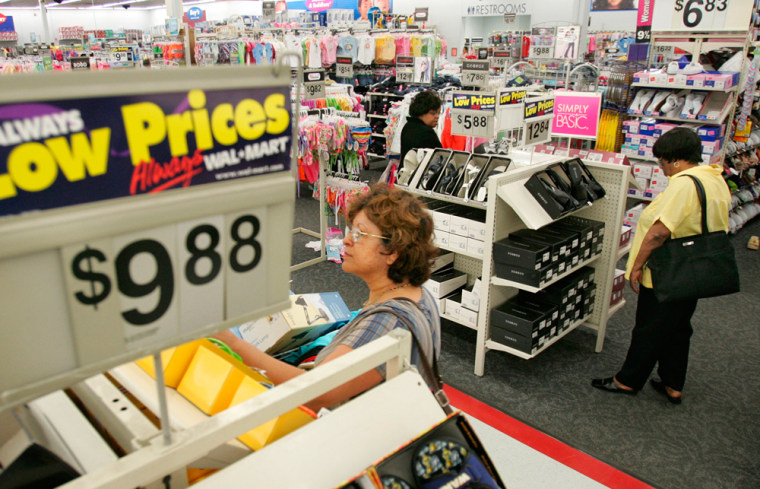Wal-Mart Stores Inc. reported a 14 percent increase in first-quarter earnings Thursday, but the results missed Wall Street estimates. The world’s largest retailer also warned that second-quarter results could be much lower than analysts expected as unseasonably cool weather and higher gasoline prices continue to hurt business.
Wal-Mart also said that while it could still meet its profit goal for the year, as business should start to improve in the second half, it will be difficult to achieve. The news sent shares down $1.30, or 2.7 percent to $47.40 in morning trading on the New York Stock Exchange.
Wal-Mart said quarterly net income grew to $2.5 billion, or 58 cents per share, in the three months ended April 30 from $2.2 billion, or 50 cents per share, a year earlier. The company said first-quarter earnings were boosted by $145 million, or 3 cents per share, from tax and legal resolutions. Excluding the items, earnings per share totaled 55 cents per share, a penny below Wall Street expectations.
Sales rose 10 percent to $70.9 billion from $64.76 billion a year ago, while total revenue including sales and other income grew to $71.7 billion from $65.4 billion a year ago.
Analysts surveyed by Thomson Financial expected the company to earn 56 cents per share on sales of $72 billion.
“We achieved record results in the quarter,” said Lee Scott, president and CEO in a statement. “Yet with higher gasoline prices and a cooler and wetter spring than normal we missed our plan. We are making the necessary adjustments and I anticipate better results in the second half of the year.”
Sales at stores open at least a year, known as same-store sales, were up 2.9 percent.
At Wal-Mart’s namesake discount stores, total sales rose 9.3 percent to $47.64 billion, while Sam’s Club division had a 5.9 percent increase, reaching $9.16 billion in sales. The international business enjoyed a 12.4 percent gain, reaching $14.11 billion in sales.
In a pre-recorded call, Tom Schoewe, Wal-Mart’s executive vice president and chief financial officer, said the company is continuing to feel the effect of gasoline prices and other pressures, including payroll, insurance and maintenance.
Schoewe said the company expects “below plan sales” for the second quarter, and projected per-share earnings for the period of between 63 cents and 67 cents.
Analysts polled by Thomson Financial expect 70 cents in the second quarter.
Schoewe said the company could still meet its target of annual profit of between $2.70 and $2.74 cents per share but doing so will be difficult considering the way the first half of the year is shaping up.
The quarter had its bright spots; Sam’s Club warehouse stores proved the exception with its operating income growing faster than sales. Also, food sales at Supercenters were up 17 percent. But the company also saw its Supercenter gross margins pressured by fuel prices and freight surcharges. And rising interest rates will hurt Wal-Mart’s bottom line. Schoewe said about half of the company’s debt is tied to floating rates.
Schoewe said Wal-Mart is making changes to its stores to increase efficiency and production and is looking at ways it can adjust its staffing.
Wal-Mart, as of April 30, had 3,719 U.S. stores and 1,596 international units, not counting Seiyu Ltd. in Japan, in which Wal-Mart has a stake.
